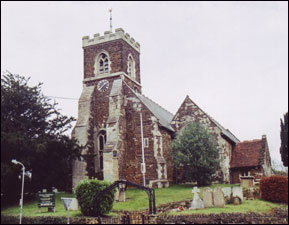![]()
The contents on this page remain on our website for informational purposes only.
Content on this page will not be reviewed or updated.
 |
|
 |
|
|
||||||
|
Civil War Skirmish
|
||||||
|
||||||
|
Milton Keynes Citizen, June 14, 2012
Throughout the centuries this district has borne tragic witness to various military encounters and skirmishes, and not infrequently a poignant reminder has been unearthed in the form of the skeletons of those warriors who perished. Near the site of the Roman encampment of Magiovinium, Fenny Stratford, was found buried on the river bank the skeleton of a headless adult. This was within an area where Belgic artefacts have been found – the Belgae being a warlike Celtic tribe – and since they normally cremated their dead the lone burial points to the aftermath of a brief skirmish. Following the Roman withdrawal from Britain the country became vulnerable to other invasions and such evidence has past come to light at Passenham. By 876 A.D. they had fought and pillaged their way across much of the English countryside and it was this rampage that King Edward, the son of Alfred the Great, resolved to end. Intending to recover all the lands still occupied by the Danes he began to fortify Towcester and Buckingham and by this foresight when the Danes launched an attack against Towcester they were successfully repulsed. Edward and his army then returned to their camp at Passenham while the Towcester defences were repaired. Eventually Edward and his forces would leave their Passenham stronghold, but for a long while the evidence for their stay remained in the form of a square entrenchment, which had been built to guard the crossing of the river ford. In fact for such a military camp the additional evidence is predictably gruesome and on many occasions broken bones have been unearthed as six skeletons were discovered beneath the rectory floor during restorations of 1874 and in 1916 two further skeletons were revealed. Three more skeletons then came to light during drainage work of 1947. In the 17th century the Civil War also saw the local area ravaged, with many towns and villages plundered and the crops destroyed. In November 1643, for use as a possible Parliamentarian outpost Colonel Harvey marched into Olney at the head of three cavalry units. However, scathed by recent Royalist defeats the dashing, if impetuous, Prince Rupert saw this as an opportunity to restore the standing of his army and consequently on the morning of Saturday, November 4 he advanced towards the unsuspecting town with a force composed of ‘several troops of horses, four hundred dragoons, and two hundred musketeers carried on horseback behind the cavalry.’ Approaching from the Yardley road at 7am he led the charge and the defenders fled until rallied at the narrow bridge of the millstream by Colonel Harvey and his officers. For several minutes a fierce engagement flared but eventually the firepower of the Royalist musketeers sealed the rout and leaving ‘sixty killed, forty prisoners, besides one hundred and twenty horses and two stands of colours’, after two hundred volleys the Roundheads fled for safety. With revenge achieved Prince Rupert then marched from the town, to leave the shaken garrison to return the following day. The graves of those who perished in the engagement lay near Emberton Bridge and in more recent times the Cowper and Newton Museum became the repository for some of the swords and skulls that were found. However, at Little Brickhill during 20th century improvements ‘to facilitate the improvement of the highway’ a sealed lead coffin was among those disturbed, which when opened was found to contain the body of a Cavalier clad in the full dress of velvet tunic and plumes. Even the locks of red hair were preserved and indeed the church registers contain an entry of August 27, 1644 which reads; ‘Mr Williams, souldyer of the King’s Army, was slayne by the Parlimant souldyers and buried the same daye.’ The coffin was later reburied. |
||||||
|
|
||||||
|
|
||||||



